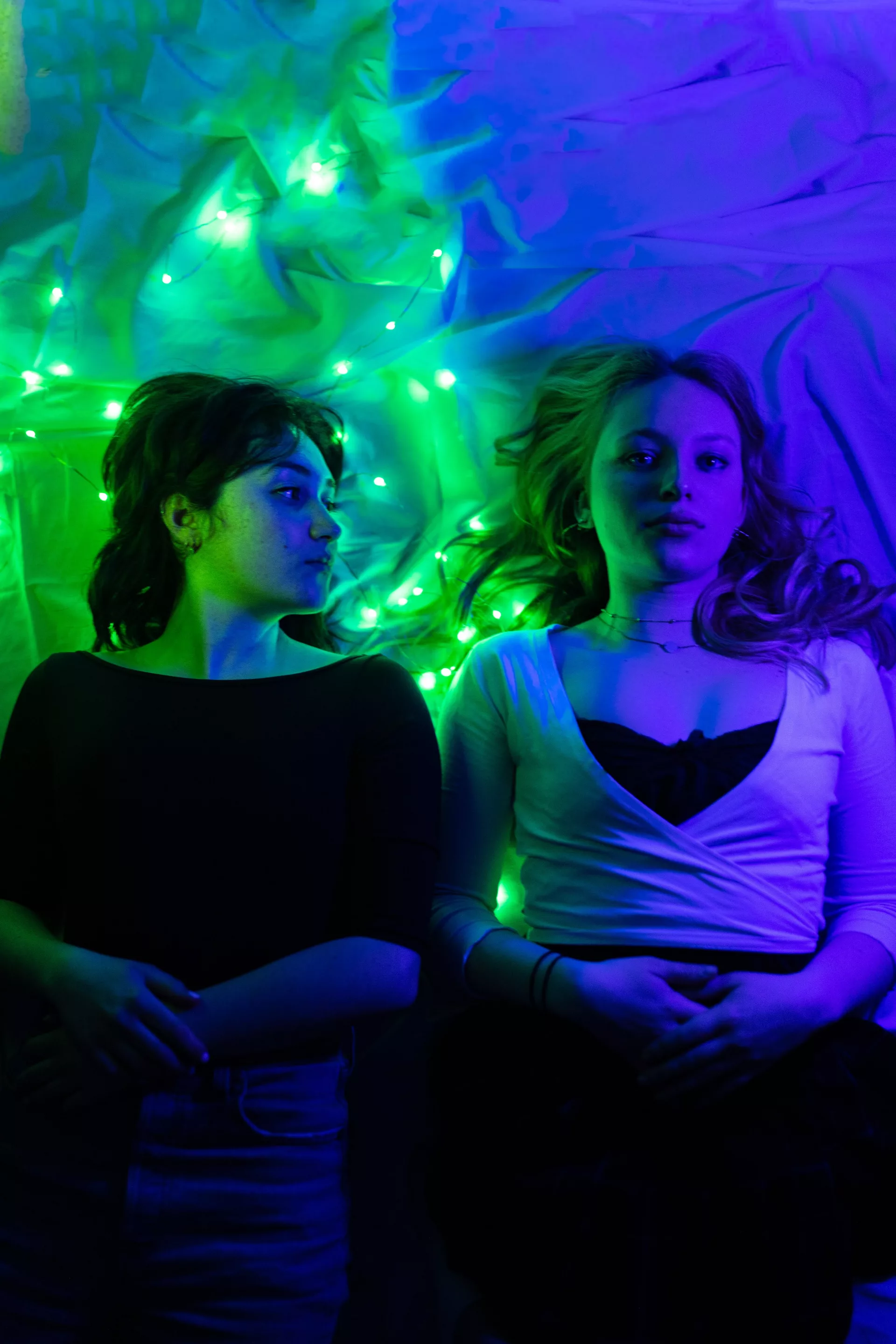A play is difficult enough to pull off in full daylight, let alone in the pitch black. But that’s exactly what Lovesong Productions’ latest offering manages to do.
Lulu Racza’s ‘A Girl In School Uniform (Walks Into A Bar)’ was first performed off-West End in 2018; now director Katie Kirkpatrick takes it to the Burton Taylor. In a dystopian near-future, very much identifiable with our present, schoolgirl Steph (Katie Rahr-Bohr), (as the joke goes) walks into a bar run by the acerbic Bell (Molly Jones). She is armed with a poster of her missing friend Charlie, who has disappeared in a ‘blackout’. Bell refuses to help; Steph refuses to take no for an answer. The play progresses in a series of blackouts and lit scenes, ghost stories and anecdotes, as the truth about Charlie unravels.
The production is marked by its outstanding performances. Katie Rahr-Bohr is very strong as naive, backpack-wielding Steph, progressively forced into maturity by her friend’s disappearance. Particularly memorable is Molly Jones’ Bell, fierce, witty, and inexplicably charming. She handles both wise-cracking sarcasm and some serious emotional heavy-lifting with dexterity, and is a pleasure to watch: her monologue at the play’s crux is perhaps the show’s highlight. The actors have real chemistry, essential for its overlapping stichomythic dialogue. This is a genuinely funny play, and its humour always lands, but it’s the more emotionally-charged moments where the pair truly shine.
The play’s focus is tight and unrelenting. Very little is concrete about the real world outside the bar (an appropriately sparse set – several chairs and tables, and a small counter). We hear of its decline anecdotally – blackouts and murders, bodies piling up in Bell and Steph’s stories, their fictions and their truths. Berry Yang’s subtle sound design allows this reality to fade in and out. We hear occasional raised voices, breaking glass. But for the most part, we are confined to the physical expanse of Bell’s bar, and the imagined stories the characters tell each other in the dark.
As much of the play is devoted to envisioning another, very different play as it is to performing the one before us. The leading pair’s strong acting prevents long expanses of imagined action from becoming dull – one can imagine less energetic actors struggling to sustain the script’s rhythm.
We rely on the characters’ appearances to get our bearings in this dystopian world, but as the theatrical ‘blackouts’ become an in-story blackout, these appearances begin to slip; we are forced to confront the characters for what they are rather than how they would like to appear. Much of the play is performed in almost total darkness. Jones and Ruhr-Bohr wield torches as they huddle, crawl, and rearrange furniture. Sav Sood’s lighting is another of the show’s high points — it is tightly controlled and well judged, and the switches between darkness and light are genuinely disorientating for characters and audience alike. Racza’s script plays with blackouts as exploratory spaces, which Kirkpatrick carries off well. Away from the glare of stage lights, it’s not just character that gains new depth, but theme too — the reality of existing in a patriarchal society is evoked more subtly in the dark.
A Girl In School Uniform sustains a steady tension between darkness and light, imagination and the pain of a misogynist reality – no easy feat. This is a production that knows what it’s doing.



